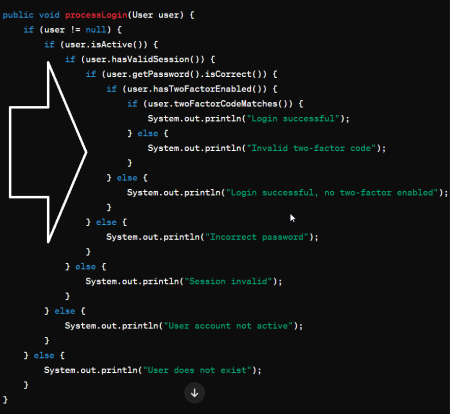Python has garnered immense popularity among developers, primarily due to its clean syntax, readability, and ease of use. These qualities make Python an elegant language that promotes code readability, resulting in efficient collaboration among developers. Adhering to consistent code formatting guidelines not only keeps your code clean and organized but also enhances its maintainability.
In this article, we’ll explore the top code formatting tips that every Python developer should adopt to ensure their code is elegant and effective.
1. PEP 8: The Style Guide for Python Code
Python Enhancement Proposal 8 (PEP 8) is the ultimate style guide for Python developers. It lays down a set of rules and conventions that promote code readability and consistency across the community. Familiarizing yourself with PEP 8 is the first step towards mastering Python code elegance. Some key PEP 8 recommendations include:
- Limiting line length to 79 characters
- Using spaces around operators and after commas
- Using 4 spaces for indentation (no tabs)
- Using a consistent naming convention
Example of following PEP 8:
1 2 3 4 5 6 7 | def greet(name): """Return a greeting for the given name.""" return f"Hello, {name}!" user_name = input("Enter your name: ") print(greet(user_name)) |
2. Consistent Naming Conventions
Using a consistent naming convention is crucial for code readability. PEP 8 provides guidelines for naming variables, functions, classes, and modules:
- Variables, functions, and module names should be in lowercase, with words separated by underscores (snake_case): user_name, calculate_tax
- Class names should use the CapWords convention (PascalCase): BankAccount, ProductInventory
- Constants should be written in uppercase, with words separated by underscores: MAX_RETRIES, API_KEY
Example of consistent naming conventions:
1 2 3 4 5 6 7 8 9 10 | class Employee: MIN_SALARY = 30000 def __init__(self, first_name, last_name, salary): self.first_name = first_name self.last_name = last_name self.salary = max(salary, Employee.MIN_SALARY) def display_employee_details(self): print(f"{self.first_name} {self.last_name}, Salary: {self.salary}") |
3. Effective Use of Whitespace
Whitespace plays a significant role in enhancing the readability of Python code. Keep these whitespace-related tips in mind:
- Use blank lines to separate logical sections of code or related functions
- Avoid using excessive whitespace, as it can be distracting
- Use single spaces around operators and after commas for clarity
Example of effective use of whitespace:
1 2 3 4 5 6 7 8 9 10 11 12 13 | def calculate_area(width, height): return width * height def calculate_perimeter(width, height): return 2 * (width + height) width = 10 height = 5 area = calculate_area(width, height) perimeter = calculate_perimeter(width, height) print(f"Area: {area}, Perimeter: {perimeter}") |
4. Proper Indentation
Python relies on indentation to define code blocks, making it crucial to use proper indentation consistently. Stick to these rules:
- Use 4 spaces per indentation level (PEP 8 recommendation)
- Align continued lines with the opening delimiter
Example of proper indentation:
1 2 3 4 5 6 7 8 9 10 11 12 13 14 15 | def calculate_total(price, tax_rate, discount): total = price * (1 + tax_rate) - discount return total prices = [25.99, 34.50, 19.99, 10.99] tax_rate = 0.07 discount = 5 total_prices = [ calculate_total(price, tax_rate, discount) for price in prices ] for index, total_price in enumerate(total_prices): print(f"Total price for item {index + 1}: {total_price:.2f}") |
5. Writing Clear and Concise Comments
Well-written comments can significantly improve the readability of your code. Here are some tips for writing clear and concise comments:
- Use inline comments sparingly and only when they add value
- Write docstrings for functions, classes, and modules to explain their purpose and usage
- Keep comments up to date as you refactor or update your code
Example of clear and concise comments:
1 2 3 4 5 6 7 8 9 10 11 12 13 | def calculate_bmi(weight, height): """ Calculate and return the Body Mass Index (BMI) for a given weight (kg) and height (m). """ return weight / (height ** 2) # Input data for a sample user user_weight = 75 # in kilograms user_height = 1.8 # in meters user_bmi = calculate_bmi(user_weight, user_height) print(f"Your BMI is: {user_bmi:.1f}") |
6. Line Length and Wrapping
PEP 8 recommends limiting the line length to a maximum of 79 characters. This helps improve readability, especially when using smaller screens or multiple side-by-side files. Here are some tips to manage line length and wrapping:
- Break long expressions or statements into multiple lines using parentheses, brackets, or braces
- Use implicit line continuation within parentheses, brackets, and braces
- When breaking function calls or definitions, align the wrapped elements with the opening delimiter
Example of line length and wrapping:
1 2 3 4 5 6 7 8 9 10 11 12 13 14 15 16 17 18 19 20 21 22 23 24 25 | def send_email( recipient, subject, body, cc=None, bcc=None, attachments=None, priority='normal' ): """ Send an email with the given parameters. """ print(f"Sending email to: {recipient}") # ... rest of the email sending code ... email_body = ( "Hello,\n\n" "We are pleased to inform you that your application has been approved.\n\n" "Best regards,\n" "The Team" ) send_email( recipient="user@example.com", subject="Application Approved", body=email_body, cc=["team@example.com"], attachments=["approval_letter.pdf"], priority="high", ) |
In this example, the function definition and the function call have been wrapped and indented to align with the opening delimiter. The email body, which is a long string, has been split into multiple lines using implicit line continuation within the parentheses.
Conclusion
Mastering elegance in Python code involves adopting a consistent style, following best practices, and prioritizing readability. By incorporating the code formatting tips outlined in this article, you’ll be well on your way to writing clean, maintainable, and efficient Python code. Make a habit of following PEP 8, using consistent naming conventions, effectively using whitespace, maintaining proper indentation, and writing clear comments. As a result, you’ll contribute to a more cohesive Python development community and produce high-quality code that others can easily understand and work with.
